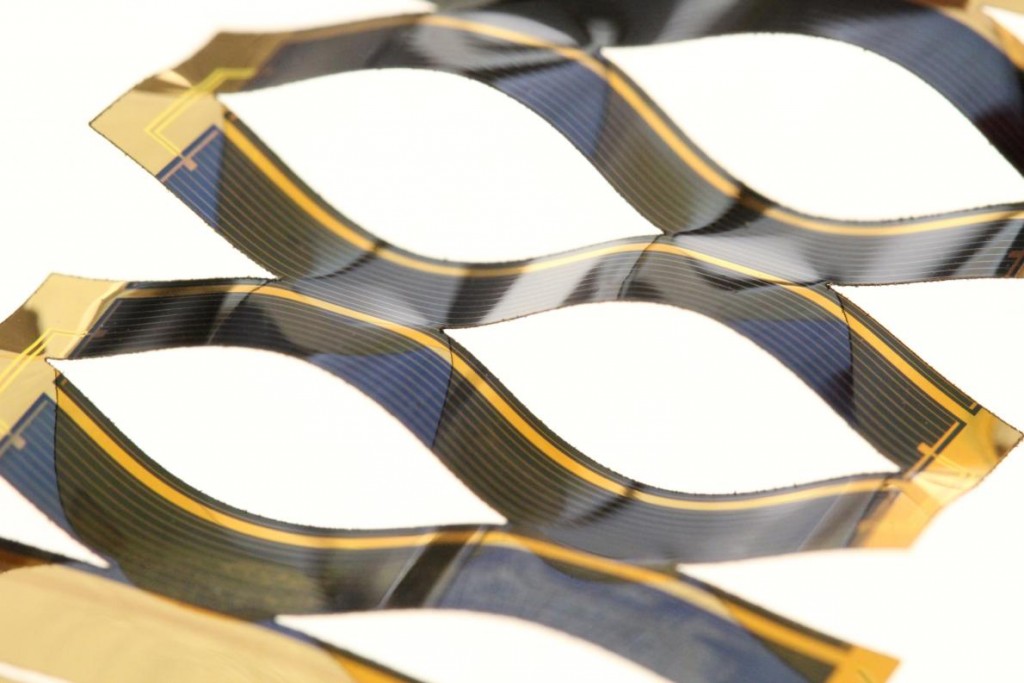RECOMMENDED VIDEOS

ONYX SOLAR : Photovoltaic Glass For Buildings
Onyx Solar Energy S.L.

Beijing Remote Power Renewable Energy Technology : MPPT…
Beijing Remote Power Renewable Energy Technology Company

Tesseract IoT Ready Universal Smart Metering and controller…
Anacle Systems Sdn Bhd

Clenergy International : Renewable Energy Investment, EPC…
Clenergy International

THERMOSHIELD
Liquid Insulation Sdn. Bhd.
Related Stories
The largest solar farm apiary in the US opens this week
The City of London will be powered with 100% renewable energy by October 2018
New study suggests that plastic waste may be transformed into usable energy
Uravu’s zero-electricity Aqua Panels produce gallons of water from thin air
104% of Portugal’s electricity consumption in March came from renewable energy
14 Sep, 2015

Kirigami Paper-Cutting Art Inspires a Wild Solar Energy Idea
Renewable Energy & Energy Efficiency | UNITED STATES | 14 Sep, 2015
Published by : Care 2 Trade
Article taken from: National Geographic
by Christina Nunez, National Geographic
A new, cutting-edge concept for solar panels started with two tools: paper and scissors.
Inspired by the Japanese art of kirigami, researchers at the University of Michigan have created a lattice-like cell that can stretch like an accordion, allowing it to tilt along the sun's trajectory and capture more energy. They detail the idea in a paper published Tuesday in the journal Nature Communications.
The study tackles a basic problem with solar arrays: The sun moves; panels typically don't. That means energy is lost as the sun changes position, unless panels are mounted on mechanized bases that can tilt to follow the light throughout the day. Tracking systems can be expensive, and "there's no way to do it on rooftops," notes co-author Max Shtein, a University of Michigan engineer who teamed with artist Matt Shlian to hatch the design.
The kirigami cells are made of flexible, thin-film gallium arsenide strips that have been cut in a simple, two-dimensional pattern. When the cells are stretched, the pattern pops out and allows them to become three-dimensional, tracking the sun over a radius of about 120 degrees. The idea joins several others aimed at making solar more efficient and widespread, from transparent cells that could be used on windows to sticky ones that could be planted anywhere.
The patterned film can collect 30 percent more solar energy than conventional cells would, according to Shtein, but there's a tradeoff: Panels would need to be about twice as big. "You're stretching the solar cell, so you have to have room to stretch it into," he says.
He worked with an artist who could cut more intricate designs—why did they go with something so basic?
"We did try a lot of patterns, and it turned out that this simple pattern was actually one of the best," Shtein says. "It has this property where it kind of moves out of its own way and prevents shadowing."
On the surface, the kirigami panels wouldn't look any different from conventional ones. The stretchy parts would be sandwiched between two surfaces, like a triple-paned window.
Keith Emery, a scientist who evaluates solar panel designs and efficiency for the National Renewable Energy Laboratory, calls the concept "exotic," "clever," and "one of the strangest ones I've ever seen."
Emery notes that the Michigan paper only demonstrates proof of concept. "There's a lot of loose ends and a lot of potential problem areas" in making kirigami cells work beyond the lab, he says. Can the material withstand that much stretching, day in and day out? Can it handle extreme temperatures? What about the hardware and energy required to move the cells back and forth?
"It's not clear that that's going to survive 25 years in the field," he says of the mechanics required.
Shtein says that it takes very little energy to stretch the panels, so the motors don't have to be big, but he acknowledges that there is a lot more work to be done before the cut-cell design is ready for the real world. The cell tested in the lab was about the size of half a dollar bill, he says, so the next step would be to test the concept at larger scales.
The idea has the potential to make rooftop solar much more efficient, but in the near term, Shtein says it would be more feasible for smaller aerospace applications. For example, sun tracking would be important for powering a moving object (say, a satellite.)
Kirigami panels could also have the advantage of weighing less, making them attractive for airborne uses. But the first step was just to prove that the idea works, and Shtein says he plans to push it further: "We're pretty optimistic about this."
The story is part of a special series that explores energy issues. For more, visit The Great Energy Challenge.
On Twitter: Follow Christina Nunez and get more environment and energy coverage at NatGeoEnergy.
